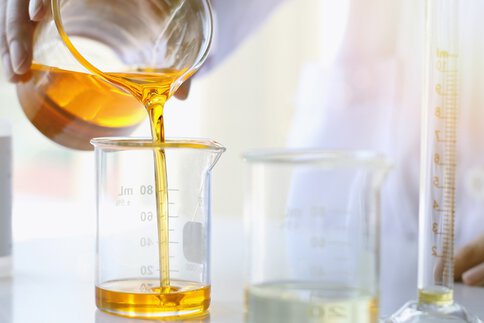Microplastics: A challenge for environmental analysis
Microplastic particles are no more than five millimeters big, there is no lower limit. Since the tiny particles are hardly noticeable, they were not perceived as an environmental problem for a very long time. A few years ago researchers discovered plastic particles first in the oceans, then in other bodies of water and finally in soils and agricultural land. New analytical methods for the detection of microplastics show the extent of the pollution.
Cups and other plastic packaging thrown away thoughtlessly are a problem for the environment. Pollution with microplastics unwittingly set free by human action is just as alarming. For example, synthetic fibers released by washing fleece and other synthetic garments find their way into our water with sewage or into agricultural soil with sewage sludge. Traffic is yet another source. In Germany alone tyre wear particles are estimated to amount to more than 40,000 tons per year. Microplastics are also produced by the degradation of larger plastic products due to weathering processes, e.g. plastic park benches and agricultural foil.
The detection of plastic particles in bodies of water and soil is a challenge, because they can easily be mistaken for natural solids like quartz. Suspicious particles can be analyzed by pyrolysis gas chromatography and mass spectrometry. But the preparation of samples and measuring, with individual particles being manually entered into the sample tube, involve a lot of manpower and incur high costs.
Chemical imaging increases throughput: the combination of microscopy and spectroscopy allows the shape, size and chemical composition of the particles to be determined at the same time. After a water sample has been filtered, for example, FTIR microscopes are used to analyze the residue on the filter. For this purpose, measuring points can be defined on the sample and analyzed individually, or a surface detector can be used, which records the IR spectra of thousands of particles in one go.
Raman microscopes are used additionally: they offer higher resolution and are therefore suitable for the analysis of particles up to the lower micrometer range. Raman microscopy can even be applied to detect microplastics in water fleas and other small organisms. An online analysis of microplastics in flowing drinking water based on Raman spectroscopy is also already being developed.
This might be also of interest to you
From petroleum, starch & Co.
Plastics manufacturers rely on multiple starting materials.

Find out about the trends and developments in fields of microplastics at analytica:
polymer • plastics • polymer analysis • analysis • microplastics • pyrolysis gas chromatography • mass spectrometry • chemical imaging • FTIR microscopy • Raman microscopy

